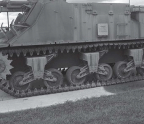SERVICING Speedometers & Tachometers

Many historic military vehicle (HMV) owners who are otherwise mechanically competent to the degree of being able to service, repair, and rebuild their vehicles’ engines, transmissions, carburetors, starters and most other major and minor components, will go on living with a malfunctioning, inaccurate, and/or noisy speedometer or tachometer. They seem to believe that servicing and repairing these items requires the skills of a watch-maker (though some speedometers and tachometers were, indeed, made by companies that also make watches and clocks). And yet, mechanical speedometers and tachometers are some of the most basic vehicular and industrial mechanisms, having been around since the early days of steamships, stationary engines, and railroad locomotives.
Mechanical speedometers and tachometers are identical in design and construction. Both are instruments to measure, indicate, and in some cases, record revolutions. The only difference is how they are calibrated and marked to be read.
THE BASICS
The basic design and principle of operation simple. There is a little, shaft-mounted, rotating, permanent magnet inside the instrument’s case. A cable within a flexible housing drives it.
In most vehicular applications, a speedometer’s cable is driven by a spiral gear on the output shaft of the transmission or transfer case. On a few vehicles, such as early Volkswagons, it may be driven from a road wheel. Mechanical tachometers are generally driven from a vehicle’s engine, often from the camshaft or distributor.
In either application, as the magnet rotates within a Field Plate, it pulls on a metal Speed Cup and draws the cup in the direction of rotation against the tension of a Hair Spring. The faster the magnet rotates, the stronger the pull on the Speed Cup, and the farther the indicating needle is drawn up around the instrument’s face, displaying a vehicle’s road speed in miles/kilometers-per-hour, or engine crankshaft revolutions-per-minute.
As the vehicle or engine slows down, comes to idle or stops, so does the
You’re reading a preview, subscribe to read more.
Start your free 30 days





